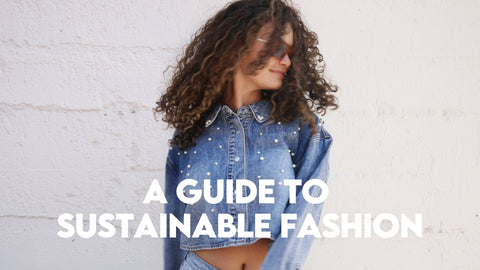Our own small actions, in relation to big brands, are meant to interact with fashion in ways that contribute less harm to people and the planet. Here's a step-by-step guide to navigating the sustainable fashion space:.
As consumers, and more so in the more developed parts of the world, our purchasing decisions have power. Everything we purchase has a consequence on the planet and people who worked with it.
Ethical consumerism can feel like a mindful step forward: supporting sustainable brands, being extremely thoughtful about every purchase, and having the least negative impact on people and the planet. The mantra "there is no ethical consumption under capitalism" is a stark reminder that, although it is very hard to be fully sustainable within current structures, there are still many ways to make a difference. If that sentiment applies to fashion more than any other industry, it is the world's largest polluter: if it was accounting for around 10% of global carbon emissions by March—more than the combined emissions of maritime shipping and international flights—its rapid, mass-production model has an equally great social cost, often predicated on exploitative labor practices.
Let us look more into each of these strategies and how they can help create a positive impact within the sustainable fashion space.

How Can I Slow Down My Fashion Consumption?
Reducing fashion consumption is about being intentional and choosing quality over quantity. Consider the "30 Wears Test": when shopping, ask yourself if you’ll wear the item at least 30 times. This practice promotes buying only pieces that will truly integrate into your wardrobe and limits impulse buys. Opt for timeless styles over fleeting trends, as these items tend to last longer both in terms of fashion relevance and wearability.
Also, have the self-control not to buy new things by shopping your own closet or swapping with friends, and if you do buy, consider second-hand or vintage options that already exist within the fashion cycle.

How Can My Spending Power Drive Change?
Our purchasing decisions could, in fact, create a better industry through responsible brands. Look for companies that value transparency, fair labor practices, environmental initiatives, and resource conservation. Some of the certifications like Fair Trade, B Corp, or OEKO-TEX would guarantee that a brand is committed to responsible production. Supporting such brands, even if it means buying less or saving up for more expensive but higher-quality alternatives, will shift demand in favor of a more ethical fashion system and send a strong message to the industry with regard to responsible practices.

How Do I Extend the Life Cycle of My Garments?
It's this: proper care. Only wash your garments when needed, air-dry them, and follow care instructions to avoid damage. Rather than classifying mending as an afterthought or a chore, embracing mending as an act of sustainability means those small tears or replacing buttons could potentially extend the life of a garment by months or even years.
If you’re looking to refresh your wardrobe, consider upcycling or altering old pieces to give them new life—an oversized shirt can be tailored, or jeans can be cropped. Learning these simple skills can turn clothes into enduring staples rather than disposable items.

How Can I Responsibly Discard My Clothes When They Are No Longer Usable?
When something has truly reached the end of its life, consider eco-friendly disposal options. Many retailers offer clothing recycling programs, where textiles can be reprocessed into new products or raw materials. If items are still wearable but no longer desired, donate them to charity or donation centers that help the underprivileged. Some brands also have take-back programs for garments, recycling or repurposing them while offering discounts for future purchases.
Its mission is to prevent clothes from going to landfills as textile waste is among the biggest contributors to environmental pollution.

How Can I Engage in Change in the Fashion Industry through Policy?
A lot of this has to do with systemic change, rather than personal habits, within the fashion industry. Get involved by supporting initiatives calling for greater accountability and sustainability within the fashion industry, such as the Fashion Act or the Clean Clothes Campaign. Use your wallet and voice to vote, sign petitions, and disseminate information through social media in order to bring awareness and affect change at a legislative level. It will also create pressure for other companies in the industry to do the same. Change can be achieved by the brands themselves, but together with consumers, there can be a call for a fashion system that would support ethical production, workers' welfare, and ecological preservation.





Comments (0)
There are no comments for this article. Be the first one to leave a message!